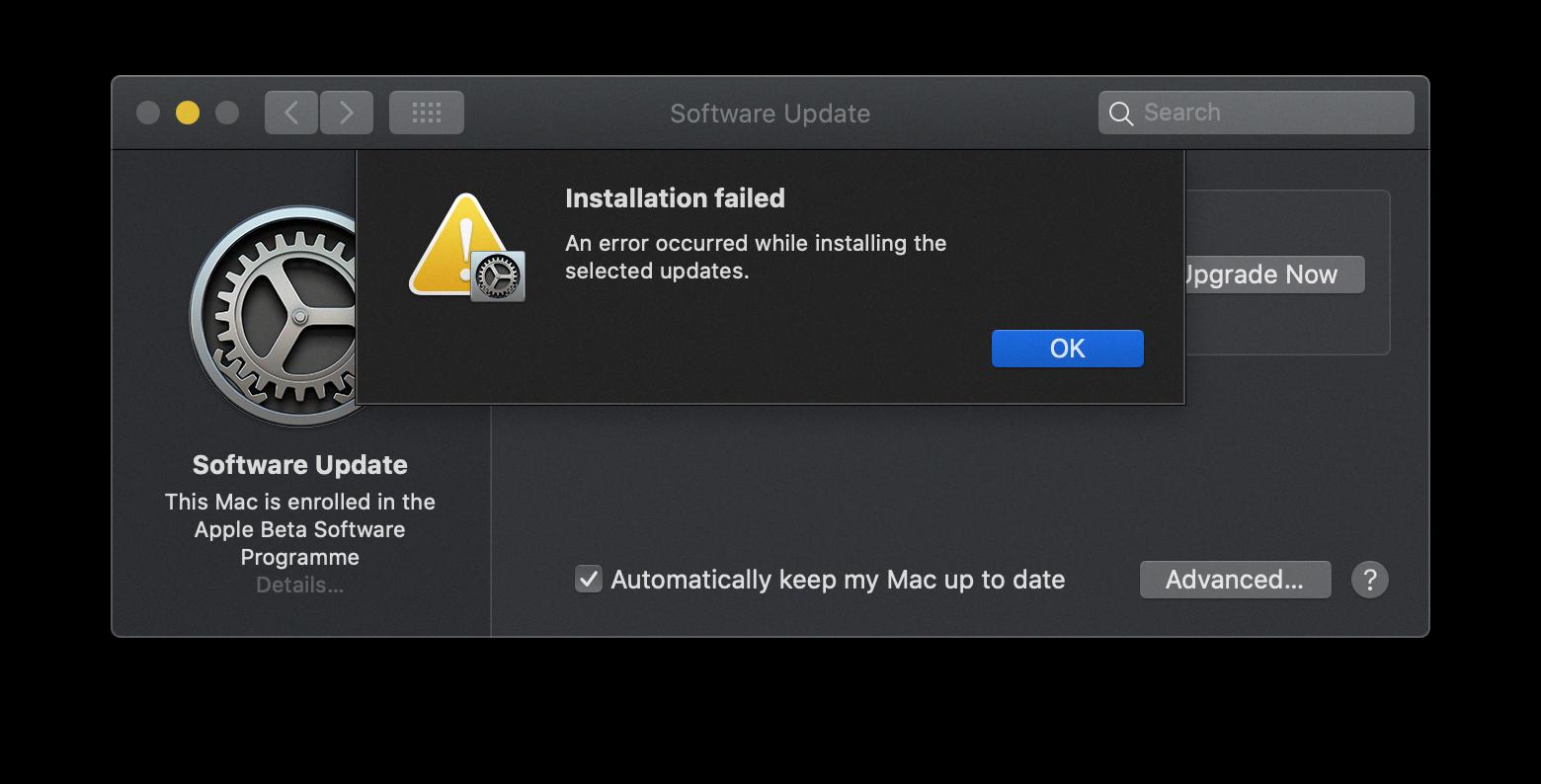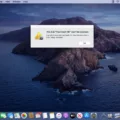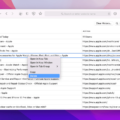The Bad Gateway error is a common issue that Mac users may encounter after updating their operating system. This error occurs when the server acting as a gateway or proxy receives an invalid response from an upstream server. If you’re facing this error after a recent Mac update, there are several steps you can take to resolve it.
1. Check your internet connection: Before troubleshooting further, ensure that your internet connection is stable. A weak or intermittent connection can lead to the Bad Gateway error. Try accessing other websites to confirm if the issue is specific to a particular site or affects all webpages.
2. Clear browser cache and cookies: Temporary files stored on your browser can sometimes cause conflicts and result in a Bad Gateway error. Clear your browser cache and cookies to eliminate any corrupt or outdated data that may be causing the issue.
3. Disable browser extensions: Browser extensions or add-ons can interfere with the proper functioning of websites and lead to errors. Disable any extensions you have installed, and then try accessing the website again.
4. Use a different browser: If you’re experiencing the Bad Gateway error on a specific browser, try accessing the website using a different browser. This will help determine if the issue is browser-specific or system-wide.
5. Restart your Mac: A simple restart can often resolve minor software glitches that may be causing the Bad Gateway error. Restart your Mac and then try accessing the website again.
6. Update your browser: Outdated browser versions can sometimes have compatibility issues with certain websites, leading to errors. Ensure that your browser is up to date to prevent such conflicts.
7. Check for macOS updates: If the Bad Gateway error persists after updating your browser, it’s worth checking for any available macOS updates. Apple regularly releases software updates that address bugs and improve system stability.
8. Disable proxy settings: Proxy settings configured on your Mac may interfere with website access and result in a Bad Gateway error. Disable any proxy settings and try accessing the website again.
9. Temporarily disable firewall and antivirus software: Security software can sometimes block certain websites or interfere with their proper functioning. Temporarily disable your firewall and antivirus software, then try accessing the website again. Remember to re-enable them once you’re done.
10. Use a VPN: If the Bad Gateway error is specific to your network or ISP, using a Virtual Private Network (VPN) can help bypass any restrictions or connectivity issues. Connect to a VPN and try accessing the website again.
11. Contact the website’s administrator: If the Bad Gateway error persists only on a specific website, it’s possible that the issue lies with the server hosting that website. Contact the website’s administrator and inform them of the error you’re experiencing.
12. Wait for the website to fix the issue: In some cases, the Bad Gateway error may be temporary and caused by server-side issues. If the error occurs on a popular website, chances are the administrators are already aware of the problem and working to resolve it. In such cases, patience is key.
13. Seek professional help: If you have tried all the above steps and are still experiencing the Bad Gateway error, it may be worth seeking assistance from a professional IT technician or contacting Apple Support for further guidance.
Remember, the Bad Gateway error can be caused by various factors, and the solutions provided here may not work in all cases. It’s always a good idea to try multiple troubleshooting steps and seek help if needed.
How Do I Fix Bad Gateway On My Mac?
To fix the 502 Bad Gateway error on your Mac, you can try the following methods:
1. Reload the page: Sometimes, the error is temporary and can be resolved by simply refreshing the page.
2. Check the site status: Verify if the website you are trying to access is experiencing any downtime or server issues. You can check the site status on various online tools or by reaching out to the website’s support team.
3. Try a different browser: Switch to a different web browser (such as Chrome, Firefox, or Safari) to see if the error persists. This helps determine if the issue is specific to your browser.
4. Use Incognito mode: Open a new private browsing window (incognito mode) and try accessing the website again. This mode disables browser extensions, which could be causing conflicts.
5. Test on another device: Check if the website works on other devices, such as smartphones or tablets. If it does, the issue might be with your Mac.
6. Clear your browser cache: Clearing the cache and cookies in your browser can resolve certain temporary issues. Go to your browser settings and clear the browsing data.
7. Check for DNS issues: DNS (Domain Name System) converts website addresses into IP addresses. Try changing your DNS server settings to a public DNS, such as Google DNS or Cloudflare DNS, to see if it resolves the error.
8. Check with your internet service provider (ISP): Contact your ISP to ensure there are no network issues on their end that could be causing the error.
9. Restart your modem/router: Power off and disconnect your modem and router for a few minutes, then reconnect and restart them. This can help resolve connectivity issues.
10. Update your software: Make sure your Mac’s operating system, web browser, and any related plugins or extensions are up to date. Outdated software can sometimes cause compatibility issues.
11. Disable VPN or proxy: If you are using a VPN or proxy service, try disabling it temporarily to see if it resolves the error. Sometimes, these services can interfere with website connections.
12. Check firewall settings: Verify that your Mac’s firewall settings are not blocking the website you’re trying to access. Temporarily disable the firewall and check if the error persists.
13. Contact website support or your system administrator: If none of the above methods work, reach out to the website’s support team or your system administrator for further assistance. They may have additional troubleshooting steps or be able to resolve the issue from their end.
Remember, the 502 Bad Gateway error is often caused by server-side issues, so it’s essential to check with the website’s administrators if the problem persists.

Why Does My Mac Keep Saying 502 Bad Gateway?
When you encounter the error message “502 Bad Gateway” on your Mac, it means that there is a problem with the server that your computer is trying to connect to. This error typically occurs when the server acting as a gateway or proxy receives an invalid response from an upstream server.
There are several possible reasons why your Mac may keep showing this error:
1. Network Connectivity Issues: The error can occur if there is a problem with your internet connection. It may be worth checking if other websites are accessible to determine if the issue is specific to the server you are trying to access or if it is a broader network problem.
2. Server Overload: Sometimes, the server you are trying to access may be experiencing a high volume of traffic or other technical issues. This can cause the server to become overloaded and respond with a 502 error.
3. Proxy or Gateway Configuration: If you are using a proxy or gateway server, misconfiguration or compatibility issues can lead to the 502 error. Ensure that your proxy settings are correctly configured or try bypassing the proxy to see if it resolves the issue.
4. DNS Issues: Domain Name System (DNS) translates domain names into IP addresses. If there are problems with your DNS settings, your Mac may not be able to connect to the correct server, resulting in a 502 error.
5. Temporary Server Outage: Occasionally, the server you are trying to access may be temporarily down for maintenance or experiencing other issues. In such cases, you can try accessing the website later to see if the error resolves itself.
To troubleshoot and resolve the 502 Bad Gateway error on your Mac, you can try the following steps:
– Refresh the webpage: Sometimes, the error may be temporary, and simply refreshing the page can resolve it.
– Clear browser cache: Clearing your browser’s cache can help eliminate any stored data that may be causing conflicts with the website.
– Restart your Mac: A simple restart can often resolve temporary network or software-related issues.
– Check your internet connection: Ensure that your internet connection is stable and working properly.
– Disable proxy or gateway server: If you are using a proxy or gateway server, try disabling it temporarily to see if it resolves the issue.
– Contact the website administrator: If the error persists, it is possible that there is an issue with the server itself. Contact the website administrator or technical support for further assistance.
Remember, the 502 Bad Gateway error is usually a temporary issue that can be resolved by following the troubleshooting steps outlined above.
Conclusion
Encountering a 502 Bad Gateway error when trying to update your Mac can be frustrating. This error typically occurs when the server you are trying to access receives an invalid response from an inbound server, such as a proxy or gateway server.
To fix this issue, there are several steps you can take. Firstly, try reloading the page and checking the site status to ensure it is not a temporary problem. Secondly, attempt accessing the website on a different browser or in incognito mode to rule out any browser-specific issues. It is also worth testing the update on another device to see if the problem persists.
Clearing your browser cache can also help resolve the issue, as it can sometimes store outdated or corrupted information that causes conflicts. Additionally, checking for DNS issues and contacting your host or internet service provider can provide further insights and potential solutions.
Troubleshooting a 502 Bad Gateway error requires a systematic approach, trying various methods until you find one that resolves the issue. Remember to stay patient and thorough in your troubleshooting process to ensure a successful update on your Mac.








